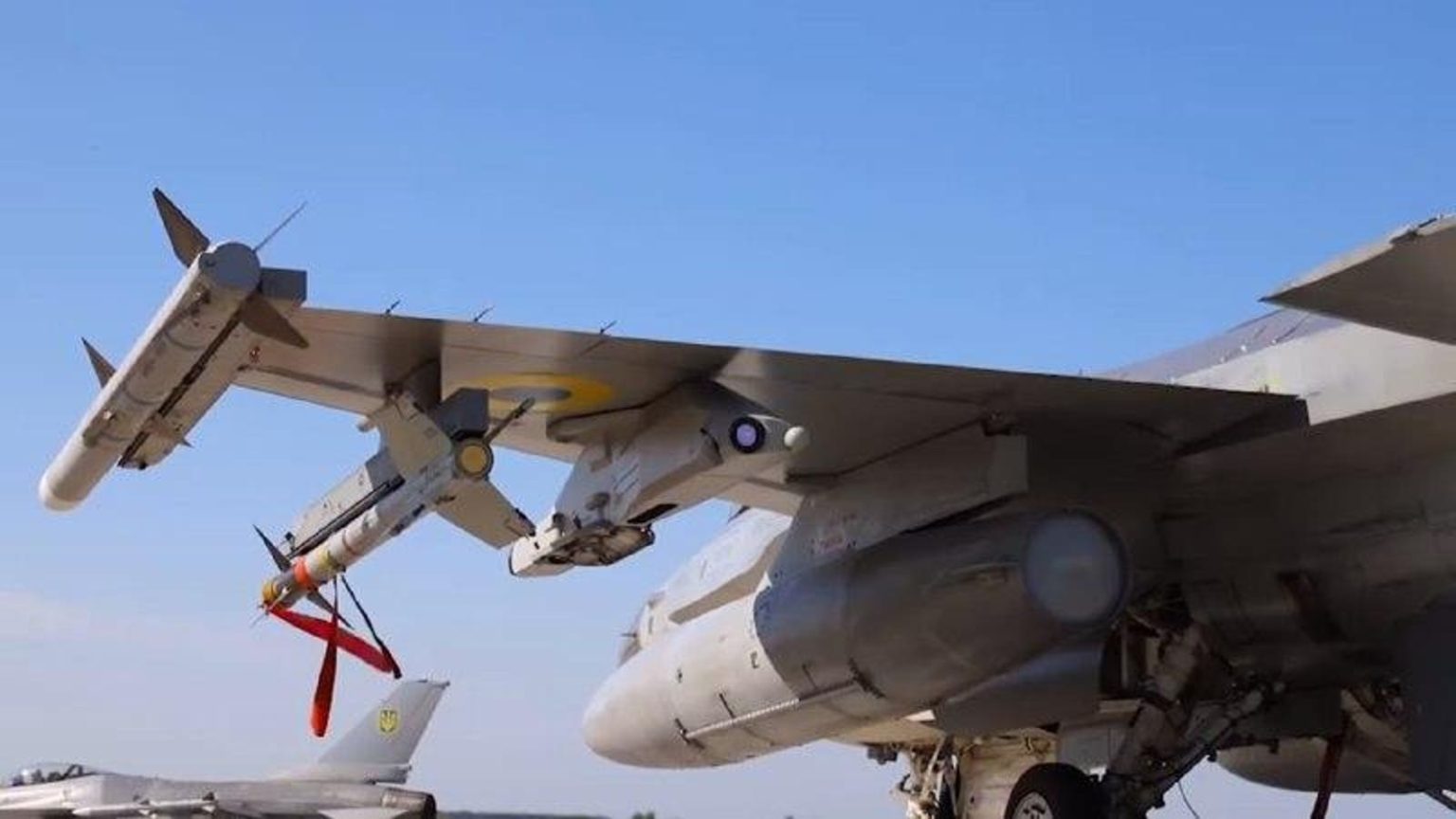A year after Denmark and The Netherlands—later joined by Norway and Belgium—pledged surplus Lockheed Martin F-16 fighters to Ukraine, the first jets are finally in front-line service in Ukraine.
They’re ex-Danish F-16AM/BM models with all the enhancements you’d expect from this modernized variant of the basic supersonic F-16—plus some extra equipment that could prove very useful to the battered Ukrainian air force as Russia’s wider war on Ukraine grinds into its 29th month.
The first official photos and videos of F-16s in Ukrainian livery, published by the office of Ukrainian president Volodymyr Zelensky on Sunday, depict an F-16 armed with AIM-9 infrared-guided dogfighting missiles and radar-guided AIM-120s, underscoring the F-16’s possible air-defense role in Ukrainian service.
Look more closely at the same photos. Note the missiles’ pylons. The mid-wing pylons include built-in self-defenses—critical systems for fighters operating in dangerous air space. And to be clear, no air space in the world is more dangerous than the air over Ukraine right now.
These defenses include the Pylon Integrated Dispensing System and the Electronic Combat Integrated Pylon System: PIDS and ECIPS. Both are co-produced by Israeli firm Elbit and partner Terma in Denmark. European F-16 operators began installing the upgraded pylons a few years ago.
PIDS ejects metal chaff and hot-burning flares to spoof incoming radar- and infrared-guided anti-aircraft missiles. ECIPS houses passive defenses to complement the active chaff and flares, including the AN/ALQ-162 jammer for defeating radars on the ground, as well as an AN/AAR-60 missile warning system for triggering the passive defenses.
Together, PIDS and ECIPS offer an F-16 comprehensive protection against a wide array of enemy missiles. For the Ukrainian air force, which has already lost more than 90 of its roughly 125 pre-war warplanes, these self-defenses meet an urgent need.
The Ukrainians have made good their aircraft losses by restoring older jets they pulled out of long-term storage and also acquiring additional jets from their allies. But they’re surely keen to preserve the 85 F-16s they’re getting from their European allies, as there aren’t many more surplus F-16s in these allies’ inventories.
For Ukraine, it’s better to protect the F-16s it has rather than seeking out replacements for F-16s it might lose. It’s inevitable that the Russians eventually will shoot down some, perhaps many, F-16s. But PIDS and ECIPS could delay these losses and save pilots’ lives.
How effective PIDS and ECIPS will be largely depends on how the Ukrainians deploy their F-16s. If the fighters mostly fly air-defense missions deep inside Ukrainian territory, they might have to contend with only the longest-range Russian missiles. But if the F-16s fly a lot of ground-attack missions directly over the front, they will face much heavier enemy fire.
But even at their most vulnerable, the F-16s will be better-protected than Ukraine’s old ex-Soviet jets, most of which lack jammers.
Read the full article here





